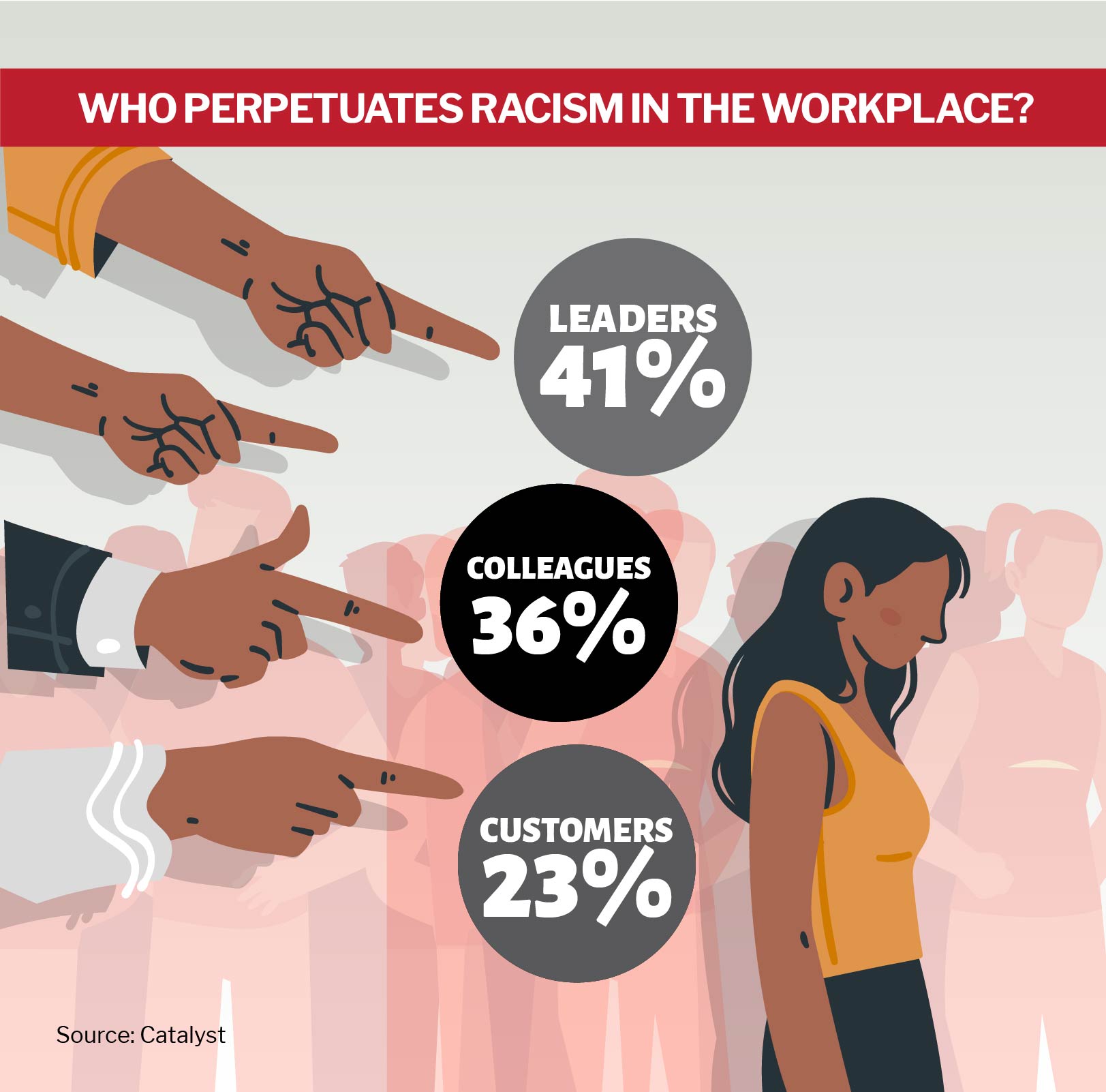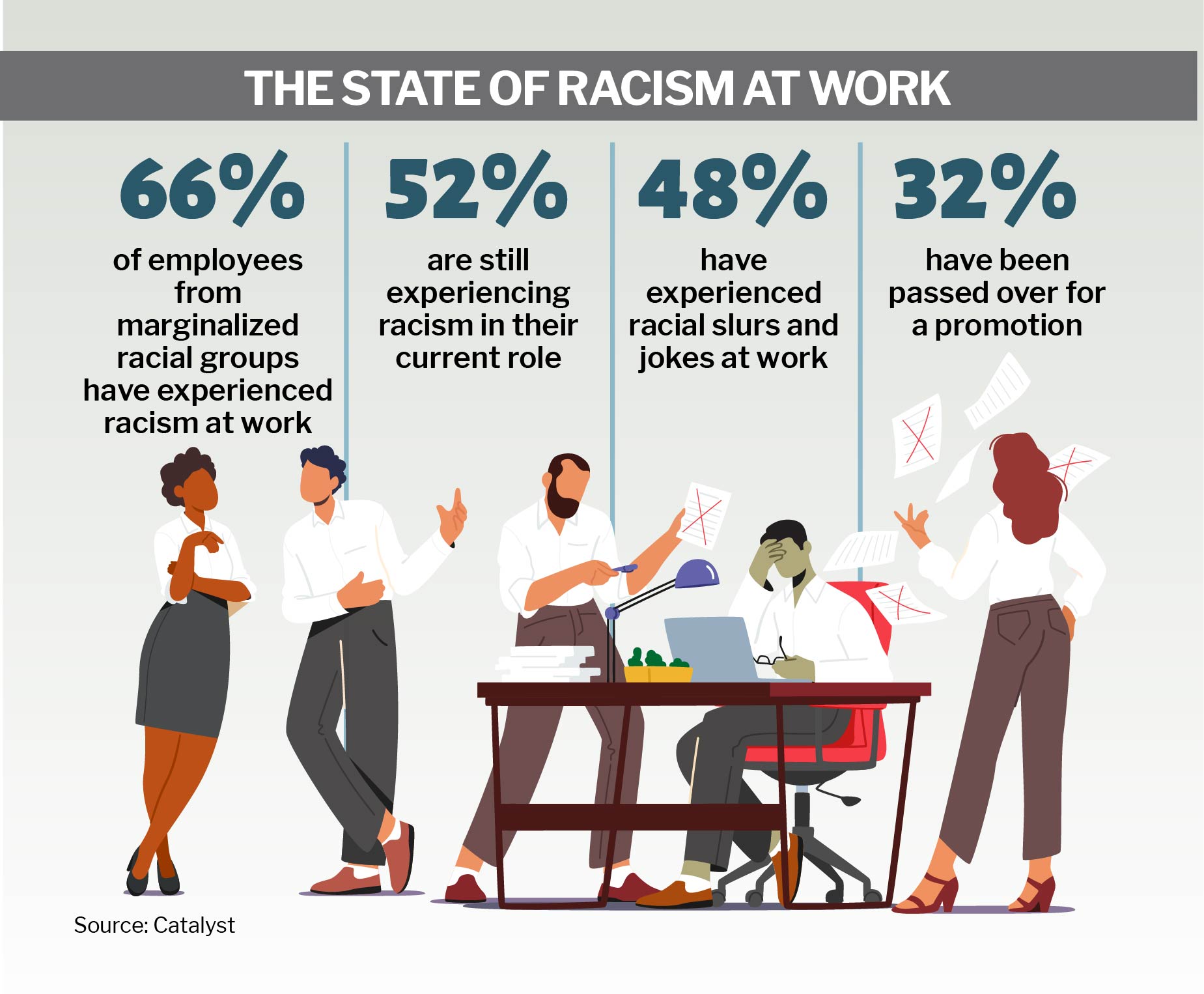
41% of those who've experienced racism say it came from their leadership team

Racism is on the rise, according to research released earlier this month, with 66% of employees from marginalized racial groups experiencing abuse at work.
And worryingly, the new report from Catalyst found that 41% of those who’ve experienced racism say it came from their leadership team. In Canada, Indigenous employees often face aggressive and systemic racism in the workplace, with that bias presenting through all aspects of the employee lifecycle – from interviewing to retirement.
According to Catalyst’s report - How Racism Shows Up at Work and the Antiracist Actions Your Organization Can Take - half of workers in that marginalized racial group are currently facing racism in their job – with the most common types of racism being workplace harassment (48%) – this includes racist jokes and slurs —and professional inequities (32%) such as pay gaps and being passed over for promotions.
“Our findings show that racism in the workplace is deeply embedded, often flying under the radar in the form of offhand comments or other exclusionary behaviours,” says Lorraine Hariton, president and CEO of Catalyst.

“It’s imperative that leaders at every level of an organization act to combat racism and build antiracist workplaces, address racist and discriminatory incidents, and create environments of physical and psychological safety that enable employees to report racist experiences.”
So, how should employers act if a complaint of racism arises in their organization? Speaking to HRD, Ed Matei, an Ontario-based labour lawyer and in-house legal counsel at Peninsula Canada, says that swift and decisive action needs to be taken.
“Exact processes depend on province, but the most important part remains the same across jurisdictions: take it seriously and investigate the complaint and then take steps to address the source of the issue,” he says.
“What steps must be taken are entirely dependent on the type of problem. Sometimes the employer must take steps to discipline employees responsible for creating or perpetuating a toxic and discriminatory atmosphere, lest the employer is found to be condoning and perpetuating the discrimination itself. This is no different to any other type of discrimination or offense to a right under applicable human rights legislation.”
According to the research from Catalyst, employees also reported racism in the form of degrading comments around their cultures and even their personal appearance. Dangerous stereotypes were spouted, including assumptions around intelligence, personal hygiene and language abilities – with women more likely to be in harm’s way than their male counterparts.
What are some Indigenous inclusion strategies employees can implement today to make a real impact tomorrow? Matei gave HRD some helpful starting points.
Foster a more inclusive culture: Not only is this helpful with addressing Indigenous discrimination but it helps alleviate issues surrounding racism generally. Providing indigenous employees avenues to share their cultural knowledge in the workplace can help significantly towards creating a welcoming and inclusive environment.
Provide accommodations: In addition to accommodations provided to employees with disabilities, providing culturally specific accommodations for cultural and spiritual practices such as attending ceremonies and events can go a long way for employees.
Cultural sensitivity training: Though typically taking place as a reactive measure, such training is an effective way to address and prevent discrimination in the workplace. Such training focuses on the history of Indigenous peoples in Canada, cultural awareness, and sensitivity to Indigenous traditions and values. This type of training can help employees understand and appreciated Indigenous cultures and reduce the likelihood of discriminatory attitudes and behaviours.
Recognize National Day for Truth and Reconciliation: An easy way for an employer to demonstrate its commitment to reconciliation and preventing discrimination against Indigenous people is to recognize the National Day of Truth and Reconciliation holiday. It’s an opportunity for all Canadians to reflect on the legacy of residential schools and the ongoing effects colonialism on Indigenous peoples.
One of the main concerns for racially marginalized groups in the workplace is a complete lack of ‘safe space’. That means psychologically harmful issues can arise, which in turn leads to a lack of morale and high turnover. The best way to way to combat this is through addressing knowledge gaps.
“The main knowledge gap often is lack of understanding of Indigenous Peoples by non-Indigenous folks,” says Carrie Lamb, Indigenous recruitment and retention lead at Fraser Health Authority and expert in Indigenous relations.
“We know our ways of knowing and existing in the world but the world often expects for us to conform to colonized systems. I think there is a lot to be understood when we all practice cultural safety to each other by creating safe spaces where we all can bring our whole selves to the employment experience.
“There is such richness and beauty that is felt when an employee can be themselves. The main knowledge gap is acceptance.”